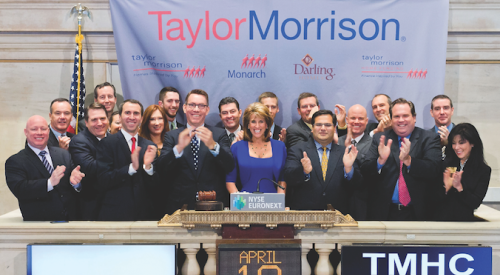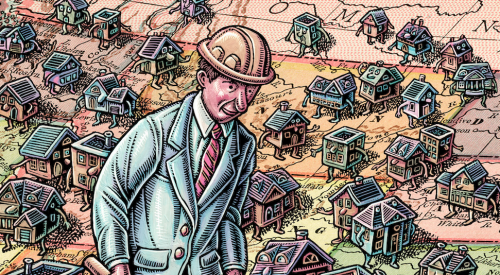The last 10 years were all good years for the American housing industry. The unprecedented national housing market expansion that began in 1993 ended abruptly in the fall of 2005, but that 12-year housing boom made many builders wealthy.
It also made a lot of home building companies large, especially at the top of PB's Giant 400. By 1996, public home builders, as well as the largest private production builders, had completely recovered from the recession of the early 1990s. They were ready to flex muscle, but no one could have predicted the prodigious growth curve ahead.
In 1996, Horton ranked No. 22 in the Giant 400, with 3,284 closings for $546 million, but the Texas firm was already a shooting star, using a growth-by-acquisition model that other public builders would emulate in these go-go years. Big mergers and acquisitions marked this era. The largest were Lennar Corp.'s acquisition of U.S. Home in 2000 and Pulte's merger with Del Webb Corp. in 2001. U.S. Home and Del Webb both ranked in the top 15 before those deals pushed Lennar and Pulte into the stratosphere. In 1996, there were nine builders with revenues above $1 billion; in 2006, 31.In 1996, Bloomington Hills, Mich.-based Pulte Corp. was the largest residential builder in America with 14,673 closings for revenues of $2.33 billion. In 2005, Pulte was again the big dog, but it took 45,630 closings for $14.37 billion in revenue to stay ahead of No. 2, D.R. Horton, which had $13.72 billion in revenue and became the first builder to top 50,000 closings in a single year (51,383).
However, it wasn't just public builders growing fast. For instance, Walnut, Calif.-based Shea Homes (PB's 2007 Builder of the Year), used an organic growth model to jump from No. 19 in 1996 ($595.8 million on 2,673 closings) to No. 13 in 2005 ($3.06 billion, 6,901 closings). Except for those in a few markets troubled by economic stagnation, production builders of all sizes grew, even without a commitment to do so. Tempe, Ariz., builder Tom Lewis has often stated his goal of stabilized production at a perceived sweet spot of 300 units a year. T.W. Lewis Co. closed 287 homes in 1996 for $62 million in revenue; in 2005, Lewis closed 355 homes for $199 million.
What caused the boom? Certainly, steady population and economic growth set the stage. The migratory movement of people and jobs to the South and West fueled Sun Belt markets. And historically low and stable mortgage interest rates helped. In 1996, fixed-rate mortgages averaged 7.81 percent and adjustables 5.67 percent, compared with 10.13 percent and 8.36 percent in 1990. And by 2005, those averages were down to 5.87 percent for fixed and 4.49 percent for adjustables. We think this stability was a key factor favoring large home building companies. It allowed them to load up for big production runs. Battleships build a lot of steam if they don't have to slow down or change directions.
9 Number of builders in 1996 with revenues above $1 billion.
70th Anniversary Article Series
- 1936-1945 Depression and War
- 1946-1955 Driving Toward Profit
- 1956-1965 Baby Boom
- 1966-1975 A Revolution
- 1976-1985 Low Energy
- 1986-1995 Clearing the Fog
- 1996-2006 The Big Boom
|












